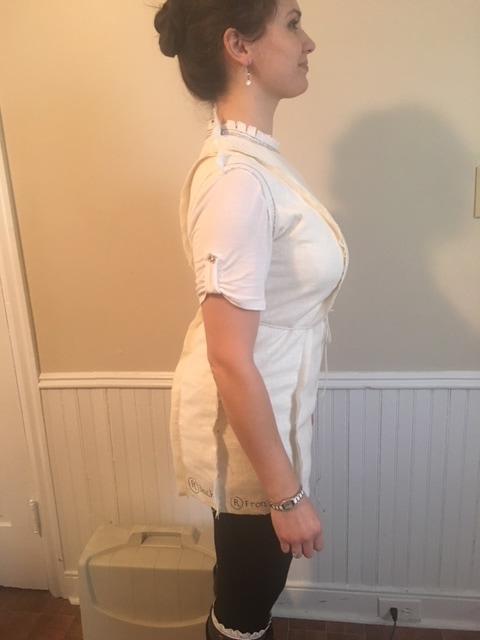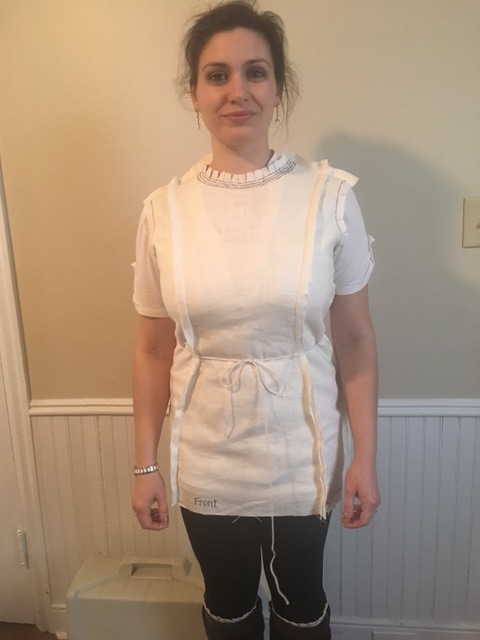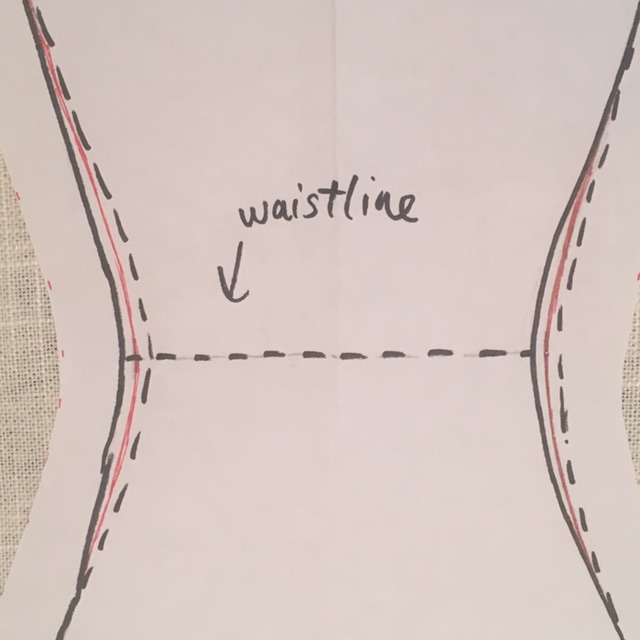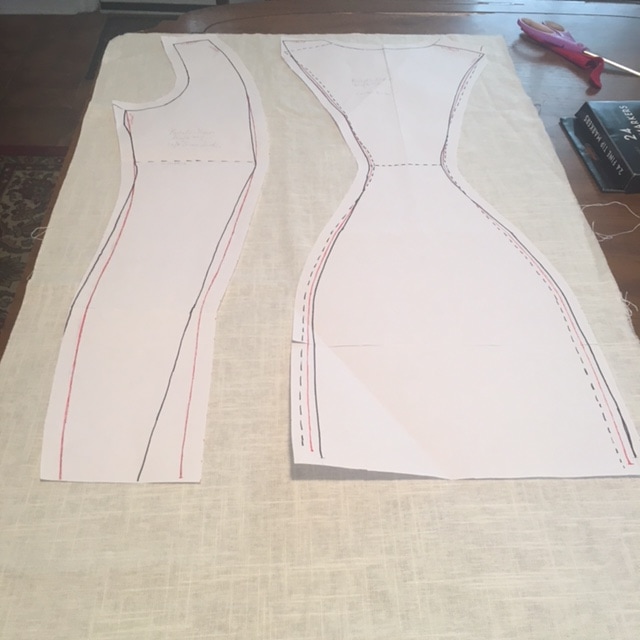|
No, this isn't a police line-up, it's my lovely sister showing off the entirely unlovely block I've made for her. Twirly twirly twirly! PATTERN WORK The process of getting a pattern involves asking lots of rhetorical questions.
After all this, fitting it is amusing. I leave a side seam open so I can put it over her head and pin it closed... but I don't account for the fact that the neckline was high and tight because I'd drafted it right on her body! So she can't get her head in, and I have to keep cutting it in concentrically larger circles while she laughs and contributes her own rhetorical questions: "Yes, Karen, how did you get so awesome?" Me: "Enough with the snark, woman!" Then I have to enlarge the armhole on one side because somehow it got ludicrously small. (Me: "How does this happen? Evil pattern elves?!" Sis: "The helpful elves went to the shoemaker's house.") The block is sleeveless; the sleeves in the pictures are from her own shirt underneath. I tie a string around her natural waist and mark its location on all pattern pieces. I also mark the locations of bra straps and bands so that if/when I draft a top from this I can make sure they are covered. Finally I move the shoulder seams so they're even (I don't know how they got so wonky!). Finally, we take the police line-up pictures. Her: "You're gonna put this on the internet?" Me: "I can chop your head out of them if you like." WHAT'S NEXT?Same as with Block #1, I need to take this apart, mark the changes very clearly, and copy the new version onto pattern paper. That'll be Block #3, the finished product. Then I can do two things:
You can see Block #3 on Monday!
0 Comments
Your comment will be posted after it is approved.
Leave a Reply. |
Karen Roy
Quilting, dressmaking, and history plied with the needle... Sites I EnjoyThe Quilt Index Categories
All
Archives
March 2024
|






 RSS Feed
RSS Feed